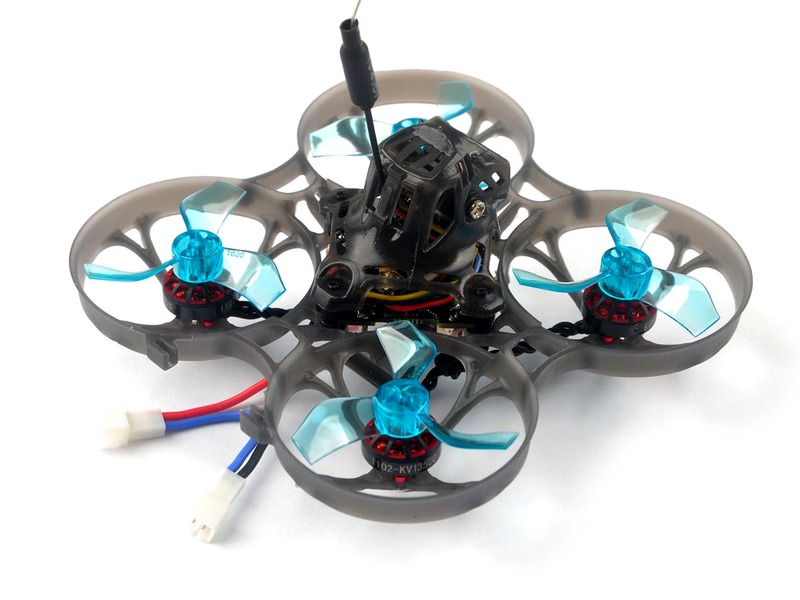Why is quadcopter unstable?

A quadcopter is an unmanned aerial vehicle (UAV) that is powered by four rotors. It is a type of multirotor helicopter that is distinct from traditional helicopters because it has four rotors instead of two. Quadcopters are popular for their maneuverability, stability, and ease of use. However, despite these advantages, quadcopters can be unstable and difficult to control.
The primary cause of quadcopter instability is the interaction between the four rotors. Each rotor produces thrust and torque that affects the other rotors. This interaction can cause the quadcopter to wobble, veer off course, or even spin out of control. In addition, the quadcopter’s center of gravity must be precisely balanced in order to maintain stability. If the center of gravity is off even slightly, it can cause the quadcopter to become unstable.
Another cause of quadcopter instability is the environment. Wind, turbulence, and other environmental factors can affect the quadcopter’s stability. For example, if the quadcopter is flown in a windy area, the wind can cause the quadcopter to drift off course and become unstable. In addition, turbulence can cause the quadcopter to become unstable and difficult to control.
The final cause of quadcopter instability is the pilot. Even the most experienced pilots can make mistakes that can cause the quadcopter to become unstable. For example, if a pilot applies too much throttle or makes sudden turns, the quadcopter can become unstable. In addition, pilots can make mistakes such as flying too close to the ground or flying in an area with a lot of obstacles, which can cause the quadcopter to become unstable.
Fortunately, there are several ways to improve quadcopter stability. First, pilots should make sure the quadcopter’s center of gravity is balanced before each flight. In addition, pilots should fly in areas with minimal wind and turbulence. Finally, pilots should practice flying in a safe environment and become familiar with the quadcopter’s controls and capabilities before attempting more difficult maneuvers.
Overall, quadcopters can be unstable and difficult to control due to the interaction between the four rotors, the environment, and the pilot’s mistakes. However, with practice and the right precautions, quadcopter stability can be improved.
Comments / Question
2. Increase the control loop frequency. By increasing the frequency of the controller's loop, the quadcopter can respond more quickly and accurately to instability.
3. Increase the amount of filtering used on the sensor data. Filtering the sensor data can help reduce noise and reduce the risk of false readings or incorrect control decisions.
4. Increase the gains used by the PID controller. Increasing the gains used by the PID controller can help it respond more quickly to instability and correct the quadcopter's attitude more effectively.
5. Increase the angular velocity input to the PID controller. Increasing the angular velocity input to the PID controller can help it react more quickly to changes in the quadcopter's attitude, making the quadcopter more stable.
2. Poorly balanced propellers.
3. Improper weight distribution.
4. Motors that are not of equal power.
5. Damaged or faulty electronic components.
6. Poorly tuned PID values.
7. Excessive vibration from the frame or motor.
8. Poorly coded flight controller software.
9. Interference from other radio frequencies.
10. Poorly tuned motor timing.
2. Increase the weight: Heavier quadcopters are more stable in the air and can better resist gusts of wind.
3. Increase the number of propellers: More propellers provide more thrust and stability.
4. Increase the power of the motors: More powerful motors provide more thrust and stability.
5. Improve the aerodynamics of the quadcopter: Streamlining the body and adding aerodynamic features such as a tail fin can help improve stability.
6. Improve the control system: A better control system can provide more precise control of the quadcopter and help improve its stability.
7. Add gyroscopes and accelerometers: These sensors can measure the quadcopter's orientation and motion and help the control system to keep it stable.
2. Propeller Size: The size of the propellers can also affect the stability of the quadcopter. If the propellers are too small, the quadcopter will not be able to generate enough lift to stay stable.
3. Motor Power: The power of the motors is also important for the stability of the quadcopter. If the motors are too weak, the quadcopter will not be able to generate enough thrust to stay stable.
4. Battery Capacity: The capacity of the battery is also important for the stability of the quadcopter. If the battery is too weak, the quadcopter will not be able to generate enough power to stay stable.
5. Wind: Wind can also affect the stability of the quadcopter. If the wind is too strong, the quadcopter will be pushed around and will be more prone to instability.

